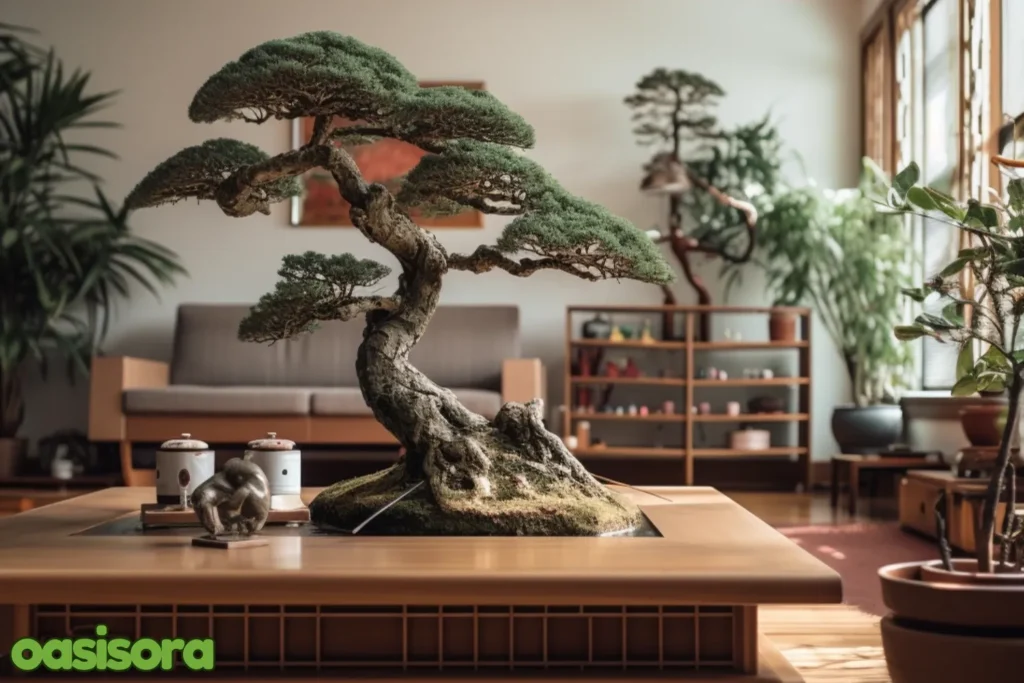
Japanese house plants with their gorgeous and lovely appearance have a distinctive role in indoor landscaping. These plants not only decorate a space but also serve to preserve harmony in your house.
From the unique shape of bonsai trees to the bright appearance of peace lilies, every plant has its deep origin in Japanese culture.
The presence of these plants in your home can promote a peaceful and attractive atmosphere where calm and nature coexist. Here we will discuss some of the well-liked Japanese home plants, their unique features, and how they can convert your living area into a calm oasis.
The Essence of Japanese House Plants
These houseplants express symbolic meaning that extends beyond simple aesthetics. Japan’s indoor plant culture reflects harmony, minimalism, and an understanding of nature’s beauty while generating tranquil environments.
They improve mental and emotional health, besides enhancing the overall look of a space. With the help of such plants, you can develop a calm and attentive atmosphere that transforms any space into a quiet landscape.
The Beauty and History of Japanese Bonsai
Possessing significant history, bonsai, and small tree-growing practices, reflects harmony with the natural world, balance, and perseverance. This traditional technique converts trees into living artworks, displaying a deep love for the beauty of nature.
Because of its perfect form, a bonsai tree in a space encourages mindfulness and peace. It offers visual appeal and a green environment to any location with its simple beauty as well as powerful symbolic meaning.
Popular Bonsai Varieties to Grow Indoors
The numerous shapes and sizes of bonsai trees possess their particular charm and significance. With all levels of experience in raising them to these popular indoor bonsai forms, they are perfect for bringing elegance and calmness to your home,
- Japanese Maple Bonsai: A common pick among indoor gardeners, the Japanese Maple Bonsai is valued for its delicate leaves and brilliant fall shades. Its flowing branches and seasonal glory throughout the year offer a touch of elegance from natural to any home.

Japanese Maple Bonsai
- Ficus Bonsai: Its shiny, dark-colored leaves and smooth stalk help to build a lush, elegant atmosphere in your area. Ficus is known for its durability and low maintenance feature, which requires little light and moisture to develop properly.

Ficus Bonsai
- Juniper Bonsai: Such plant has a remarkable sculpture-like character having lush green leaves and twisted rough branches. This indoor-adaptable variety is ideal for those looking for a stronger and wonderful bonsai type since it imparts a sense of strength and peace.

Juniper Bonsai
- Cherry Blossom Bonsai: This species of bonsai blooms amazing, delicate flowers in spring showing prettiness and rebirth. It increases the value of any landscape because of its soft pink blossoms, which convey sensations of joy and peace.

Cherry Blossom Bonsai
Other Popular Japanese Indoor Plants
Besides bonsai, several traditional Japanese plants can be best for indoors while bringing a certain natural element into your house. These plants help in creating a peaceful and relaxing atmosphere. Let’s overview some common elegant forms below:
1. Peace Lily (Spathiphyllum)
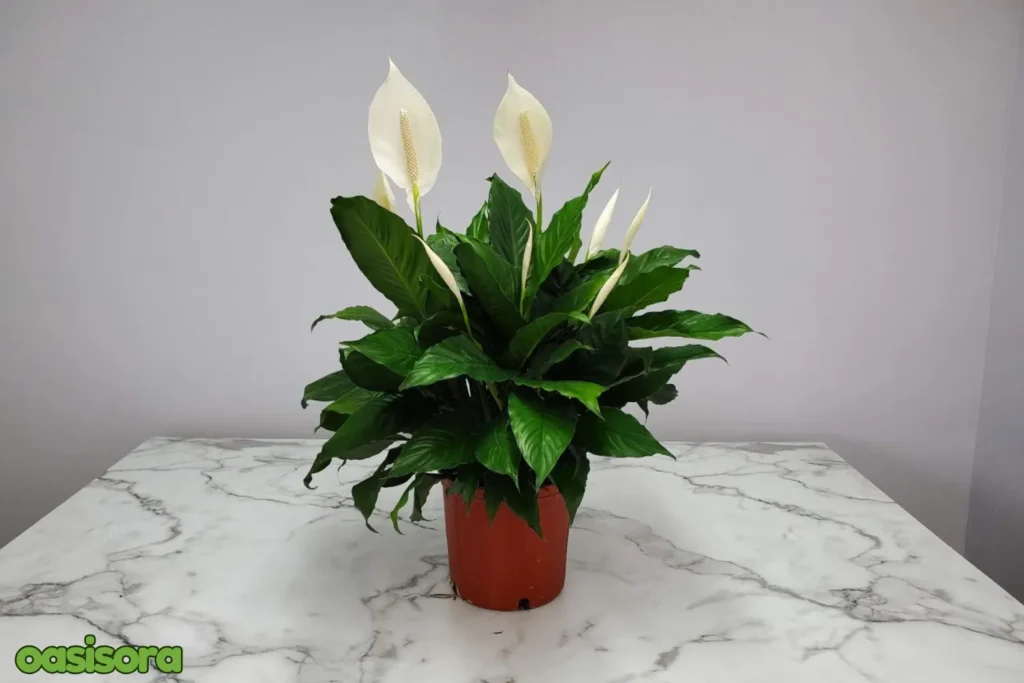
Peace Lily
Little Care: These beautiful plants are perfect for your indoor environments as they need less maintenance for their development.
Air purification: Potential to reduce pollutants while increasing the quality of indoor air.
Low Light Tolerance: Works effectively in spaces with very low light intensity.
Beautiful Blooms: This set includes wonderful white flowers that give any area an atmosphere of simplicity and purity.
2. Japanese Aralia (Fatsia japonica)

Japanese Aralia
Large, Glossy leaves: Having lush green foliage, providing a tropical, cheerful atmosphere to your indoor spots.
Seasonal Beauty: Leaves experience wonderful color changes all year round.
Moderate Care Needs: Needs minimal attention to flourish. Simply requires low light and periodic watering for optimal growth.
3. Kokedama (Moss Ball Plants)
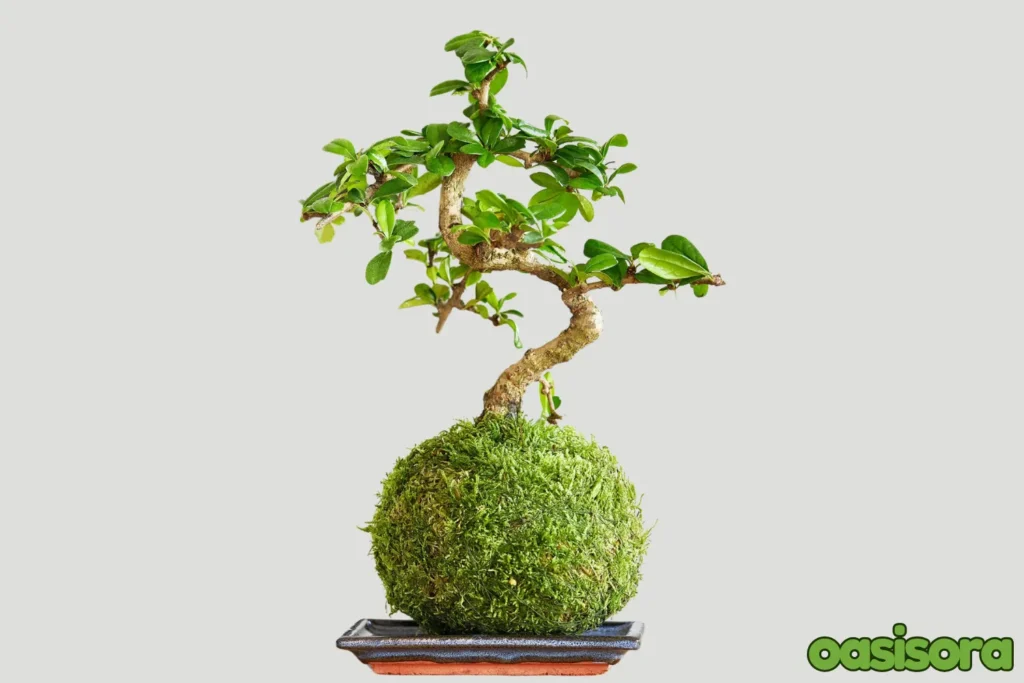
Kokedama Moss Ball Plant
Unique Style: A stylish and modest way to show off plants and perform significantly with ferns and ivies.
Versatile: Ideal for hanging or placing on shelves, these items give your area a fresh feel.
Maintenance: The Kokadema moss ball is the foundation for the plant’s roots and demands little management and care.
4. Japanese Ferns (Asplenium nidus)

Japanese Fern
Uniqueness: Soft, lovely plumes provide your indoor areas with an attractive touch.
Require Humidity: Flourishes rapidly with considerable moisture and little natural light, which makes them ideal for living spaces.
Gorgeous Look: Contribute highly to making any space pleasant and luxurious.
- Bamboo (Lucky Bamboo)
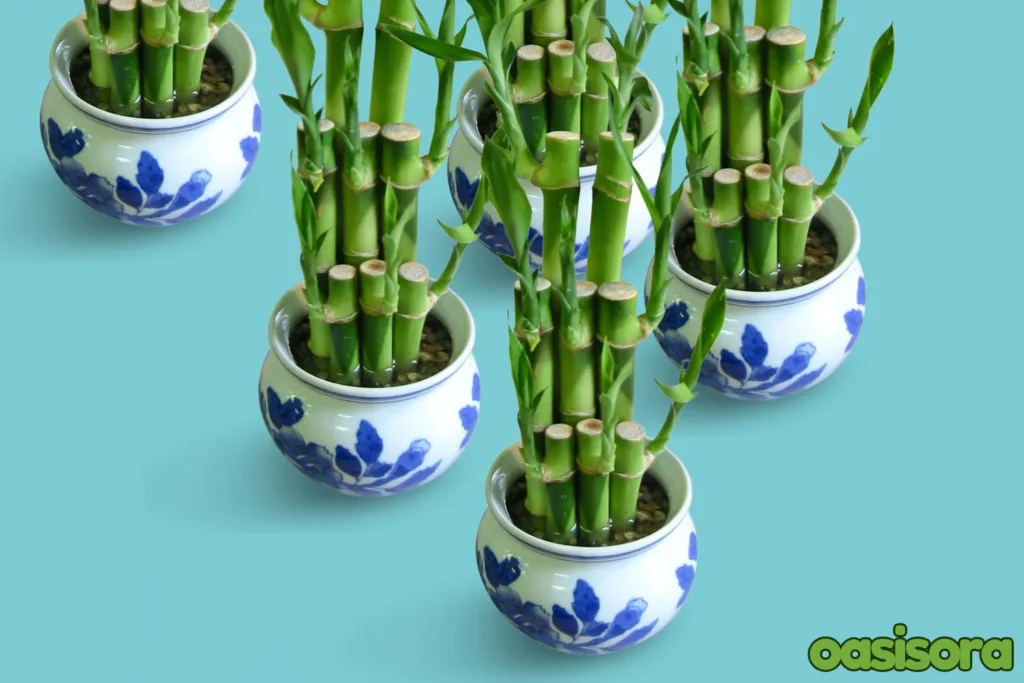
Bamboo (Lucky Bamboo)
Symbolism: These unique plants represent luck and determination in Japanese history.
Simple Growing: Simple yet lovely with easy to cultivate and take care of.
Great Look: Offers any area strength, calm, and beneficial impressions.
Care Tips for Japanese House Plants
Understanding the special needs of these plants, especially their light conditions and watering plans, is vital to their maintenance. These plants may survive and add timeless beauty and peace to your house with the appropriate care and setting.
Use these basic instructions to guarantee your Japanese plants prosper:
- Appropriate light conditions: Bright and indirect light is more effective for most kinds. Protect them from direct sunlight because it may harm the foliage on your plants.
- Watering frequency: Analyse the soil before applying water as Japanese plants shouldn’t be overwatered.
- Ideal humidity levels: Effectively drained soil is suitable for their growth.
- How to prune and maintain Bonsai: Consistent pruning for bonsai trees helps preserve their desired shape.
- Fertilizing: For proper development, utilize the right fertilizers during the period of growth.
Essential Accessories for Your Japanese House Plants
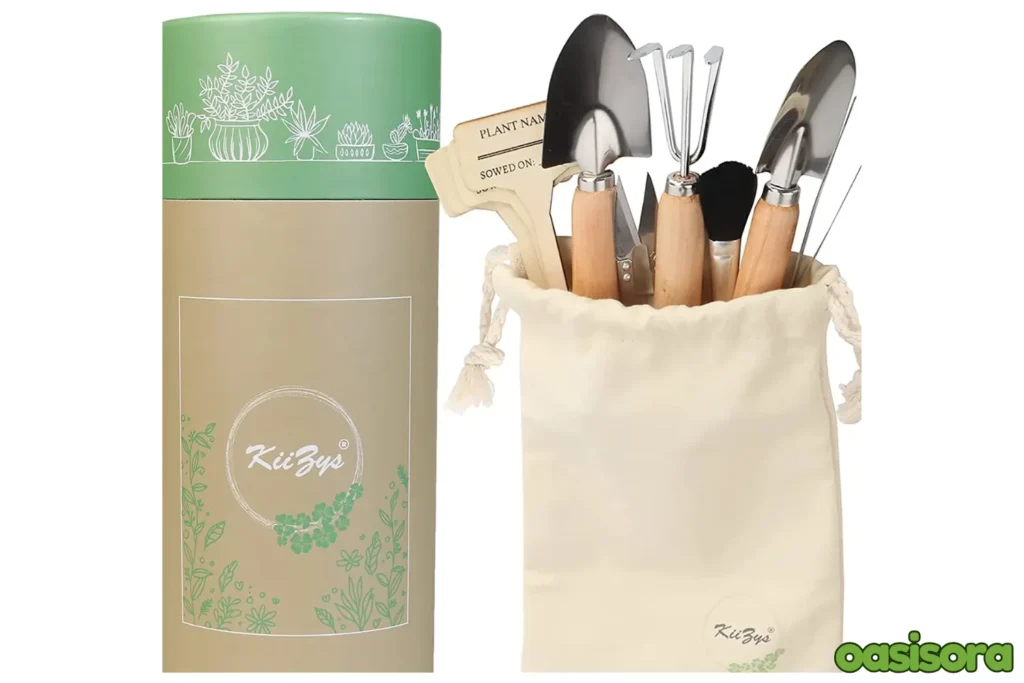
Japanese House Plants Accessories
Use centerpieces that go beautifully with the underlying elegance of your house plants to further bring out their beauty and artistic appeal. Here are several fundamentals:
- Bonsai Tools for Trimming and Pruning: Specialized equipment, such as wire and pruning shears, helps to preserve your bonsai healthy and in shape so it remains finely carved.
- Ceramic Pots with Minimalist Designs: The magnificence of the plants is highlighted by the clean, delicate appearance formed by simple, elegant ceramic pots in mild hues.
- Zen Garden Décor: You can improve the comfortable, meditative atmosphere of your living space by including tiny Zen-inspired features like sand, rocks, or tiny statues, which are great Japanese garden inspiration.
- Pebbles and Stones for a Natural Look: Placing pebbles or ornamental stones in your plant’s pot provides texture and a soothing organic aspect.
Check out this for a comprehensive look at the world of Japanese house plants, specifically bonsai.
Creating a Japanese-inspired Indoor Oasis
It’s critical to style your sitting area with thoughtfully considered design elements that go well with your Japanese home plants and create a secure, Zen-like atmosphere. The following suggestions will help you update your house:
- Creating a Natural Light Flow: Make arrangements to get the desired amount of natural light so your house plants can flourish in an airy environment. Clear curtains or blinds can soften the light and build a warm, calming aura.
- Using Neutral Colors and Minimal Furniture: Develop an air of openness and relaxation by utilizing simple and valuable furniture in soft colors such as white and gray that enable your plants to stand as the focal point.
- Incorporating Traditional Japanese Décor Elements: Use wooden styles, tatami mats, or Shoji screens for a slightly traditional Japanese design. All of these factors produce a calm, classic style that elegantly displays Japanese plants’ graceful nature and simplicity.
Bringing Japanese Style to Your Balcony or Patio
Japanese Style Balcony
Implement Japanese design into your patio or balcony to make your home’s interior calm and more natural. Here are a few options for designing an inspiring Japanese outdoor hideaway.
- Use of Outdoor Bonsai: Indoor locations aren’t the sole places where bonsai trees might exist. Under favorable conditions, outdoor bonsai forms can thrive and lend your patio or balcony a decorative, meditative touch. Pick larger varieties like juniper or Japanese Black Pine to improve the outdoor area.
- Adding Japanese Maples in Pots: Japanese maples look stunning outdoors because of their fragile leaves and striking fall shades. Plant them in ornamental planters to bring out their beauty and keep a manageable setting.
- Koi Ponds or Water Features: Your yard can become a more calming place with the presence of water elements. Koi fish make your zen space more relaxing, and the soft sound of running water makes your terrace or balcony the ideal spot for meditation.
Embracing Wabi-Sabi in Your Plant Collection
According to the Japanese philosophy of wabi-sabi, imperfections and the different levels of aging are purposeful. In the case of Japanese house plants, it involves appreciating the distinctive textures, forms, and small flaws that make each one unique.
Irregular plant growth or a curved leaf of bonsai are examples of Wabi-Sabi, which suggests we recognize the organic, constantly evolving beauty of plants as they grow and transform over time. It’s about feeling the charm and peace of mind in life’s small, unexpected moments.
Final Thoughts
Japanese house plants inspire any home with an exclusive blend of aesthetic value, harmony, and cultural value. These plants, ranging from the graceful bonsai to the exceptional peace lily, boost the visual attractiveness of the surroundings by promoting calm and awareness.
You can develop a peaceful space that supports your mental and emotional health by enjoying their simple and peaceful features. Whether you are an expert gardener or a beginner, placing Japanese plants in your house is a basic yet effective method to bring balance, natural beauty, and a touch of Zen to your living area.
FAQs
Do Japanese house plants need great care?
Low-maintenance Japanese plants, such as peace lilies, and ficus bonsai can easily be cultivated in your zen-like regions. A lot of plants don’t need routine watering and require indirect light. They are suitable for everyone if their specific needs, like transplanting or pruning, are fulfilled on time.
Where should we keep Japanese house plants indoors for their best growth?
Areas with filtered light, like window sills or spaces next to windows with visible curtains, are appropriate for house plants. Without exposure to direct sunlight, which may damage fragile leaves, such locations offer just the right amount of light. Maintaining plant health additionally demands adequate ventilation.
Can Japanese plants affect indoor air quality?
Undoubtedly many Japanese plants are famous for purifying the air. Bamboo and peace lilies are particularly effective at eliminating air pollutants, which leads to a cleaner and healthier interior atmosphere. They improve the air quality in your room while adding visual interest.
How do I incorporate Japanese house plants into a modern home design?
Go for sleek and simple designs for combining Japanese plants with modern furnishings. Put plants in areas in which they act as the main attraction using plain, neutral-colored containers. To add a touch of Zen, use classic components like bamboo or bonsai trees, but keep the remaining elements of the décor plain and modern to keep things in balance.
